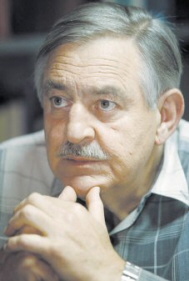South Africa is a country that has been through two very different systems of government, which gives their current structure a unique foundation. Under Apartheid, all economic, industrial, agricultural, military, and social power was in the hands of the few whites that settled here decades ago. Native blacks were refused South African citizenship and were left to survive with the lowest of labor, for example mining, factory work, and farm hands.  The minority political part of the time was known as the National Party, and they continued to fight for all blacks to become ‘Homeland’ citizens, pushing them to barren pieces of land with no livable infrastructure.
The minority political part of the time was known as the National Party, and they continued to fight for all blacks to become ‘Homeland’ citizens, pushing them to barren pieces of land with no livable infrastructure.
In relation to media during the Apartheid Era, South Africa’s media system strive to keep social order with government intervention. Most of the country’s media power was concentrated with the Dutch minority that dictated the country’s politics and constitutional accountability. The theory of authoritarianism best describes South Africa during this time, from the first ‘white’ circulated newspaper that dates back to when settlers came in the 1600s. “The National Party used censorship freely to control what the media published. The Publications Act of 1974 gave the South African government the power to censor movies, plays, books, and other entertainment programs, as well as the right to decide what South Africans could or could not view” (pressreference.com).
Throughout the years of oppression, South African journalists had to juggle multitudes of legislative law that prevented any reporting that criticizes the government. Both foreign and domestic journalists had the responsibility of cross-checking with these authoritarian laws before deciding if the content was actually ‘legal’. Many of these censorship regulations started in place when South Africa became the subject of many international affairs. ““Until the late seventies, the mainstream press was either conservative, Afrikaans-language papers or liberal, the English-language papers. (sahistory.com) Any type of newspaper that had reflected the views of the majority or that did not align with the views of the minority were never allowed to operate. In spite of the world looking down negatively at their media regulation practices, the white minority only strengthened their grip on what content was leaked out. This was known as the ‘State of Emergency’ restrictions, which mainly focused on removing “public awareness of the mass [and]…resistance [movements] by banning reports on events” (pressreference.com). Examples of such blatant censorship include reporters witnessing shootings and not being able to report about it until official verification was passed; “If the journalist saw bodies of slain soldiers or police officers, he or she could not report that information until it came from official sources” (pressreference.com).
It was not until the Township Uprisings of 1984 that these unspoken journalists finally gained the momentum to challenge the newspapers.

Young journalists from all backgrounds fought verbal wars with these one-minded newspaper publishers, finding massive loopholes in the rushed restriction laws passed by the National Party. Finally, after getting some of their head-turning stories to the predominately white audience, the state gave itself the power to suspend any and all newspapers and whatever content the disapprove, in fear that this suppressed content might scare away advertisers. As the states grip tightens, independent reports only found more ways around legislation to spread the truth of what’s happening in South Africa.
This led to National Party electing Home Affairs Minister, Stoffel Botha, to have the power of requiring all reporters to register with the government.

This refocused their attention from the slowly changing newspaper companies to the individual reporter, giving jail sentences to any person who does not conform with the beliefs of journalism under apartheid.
